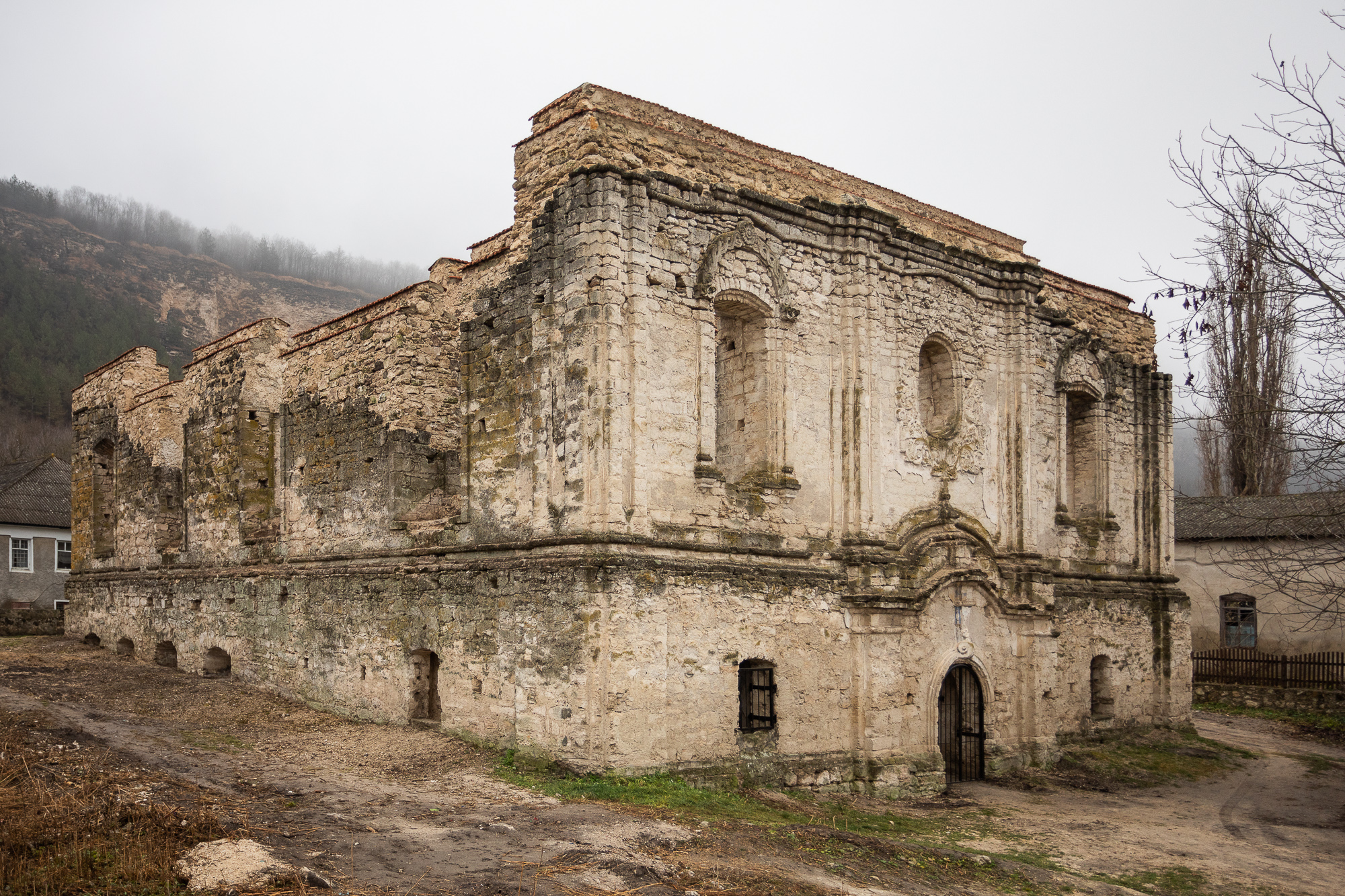The conservation works of the synagogue and church from Rașcov village, located on the left bank of the Nistru river, have been completed. This was possible thanks to the support of the EU Confidence Building Measures Programme, implemented by UNDP Moldova.
Rașcov synagogue and church were conserved, thanks to EU and UNDP support
October 7, 2022

The synagogue in Rașcov
The village of Rașcov, located on the left bank of the Nistru river, is known for its picturesque landscapes and ethnic diversity. Polish, Armenians, Ukrainians, Moldovans, and Russians have been living there for years and Jews constitute more than half of the population.
“People are living in peace here. The village of Rașcov demonstrates that people of different religion, speaking different languages, having different cultural traditions can live together in a multi-ethnic and compact community."Oleg Bersadschii, mayor of Rașcov village
Seven places of worship are documented in the archives of Rașcov, of which only four have been preserved until today. These include the synagogue and church’s ruins.
The synagogue of Rașcov: “There aren’t any other constructions of this type in Moldova”
The synagogue of Rașcov dates back to 1749 and is considered as one of the 20 most beautiful buildings in Europe.
“There aren’t any other constructions of this type in Moldova. The stone décor, built in the Baroque and Rococo styles, has been preserved. The building is outstanding and has a lot of visitors,” says Olga Slivca, director of the Rașcov museum.
In addition to various places of worship, there are several cemeteries, two of which being Jewish.
“After visiting the synagogue, people go to visit the cemeteries, as well. In such a way the grave of the Rabin Shabtai, the founder of the Hasidic movement in this region, was discovered at one of the cemeteries,” says local councillor Alla Lopatin.
Pilgrims both from Moldova, and from the international Jewish community come to visit Rașcov.
The ruins of Rașcov church — a heritage requiring protection
Locals tell that the Rașcov church was built in 1740. According to some other writings, Ruxandra, the daughter of Voivode of Moldova Vasile Lupu, was exiled to this community. She used to come to the church and admire Moldova’s landscapes over the Nistru river. In the 18th century, the church was considered Greek-Russian and in 1894 it became Christian Orthodox. In the 1930s it was turned into a grain barn and was heavily damaged.
The conservation works lasted for several months and follow the national and international standards of heritage preservation.
“No standard consolidation works are allowed on such historic buildings; interventions should be minimal, therefore we use a special diamond drilling at a certain humidity, as it is essential that these walls are reinforced. We should preserve the existing historical heritage. We cannot change these walls and this plaster in order not to affect the building’s exterior and interior aspect,” explains Iurii Kriklivets, deputy director of the company that carried out the conservation works.
Local public authorities are planning to attract tourists to visit Rașcov.
“Tourism will help us to develop the local infrastructure, which is very important. Demand also generates supply. We hope that small hotels or guesthouses will open and this will encourage young people to stay in the village,” says Oleg Bersadschii, mayor of Rașcov.
The synagogue and the church of Rașcov are among the 10 cultural-historical sites on both banks of the Nistru river, selected for restoration and conservation under the cultural heritage component of the EU Confidence Building Measures Programme. The programme contributes to building trust between people on both sides of the Nistru river by involving them in joint development projects.

 Locations
Locations










